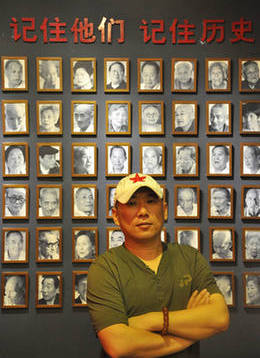A Descendant of Nanjing
By staff reporter AN XINZHU
In August of every year, the Japan-China Friendship Association organizes a touring exhibition around Japan themed “Expose War for Peace.” Exhibits include historical photos and objects relating to the Japanese war of aggression against China.
The 2014 three-day exhibition started on August 10 and concluded on August 12 at the Nagoya Civic Assembly Hall. Thirty-nine non-governmental organizations provided extensive historical WWII exhibits. Curator of the Nanjing Private Museum of the Chinese War of Resistance against Japanese Aggression Wu Xianbin is the first representative of a Chinese NGO invited to participate in the exhibition.
|
 |
|
Wu Xianbin, curator and founder of the Nanjing Private Museum of the Chinese War of Resistance against Japanese Aggression, amassed a considerable quantity of historical materials to exhibit. An Xinzhu |
One Person’s Museum
The Nanjing Private Museum of China’s War of Resistance against Japanese Aggression sits in the southern suburbs of Nanjing. At the museum entrance is an inscribed aphorism by Tian Han, lyricist of China’s national anthem. It reads, “A nation without a sense of crisis is hopeless and incurable.”
Wu, founder and curator of the museum, told China Today that most of the museum’s 3,700 exhibits are related to the Nanjing Massacre, and to the battles that took place in the city during the War of Resistance against Japanese Aggression.
Wu is among the first batch of entrepreneurs to emerge after the reform and opening-up policy came into effect in China. Manager of a home refurbishment materials factory, Wu started to collect war-related items in 2004.
“Despite publicity provided by the government, I had only a general, abstract understanding of that period of history. Out of curiosity, I started to collect objects originating in that epoch, and officially founded the museum in 2006,” Wu said.
Like many other cities around the country, Nanjing is site of several famous memorial halls and museums. Compared to public museums, however, the Nanjing Private Museum of the Chinese War of Resistance against Japanese Aggression has more distinct features. “My intention is to record history through the memories of the people. I want to collect stories from anyone who personally experienced that period of time,” Wu said.
Admission to the museum is free of charge. During the eight years since its opening it has received 160,000 visitors.
